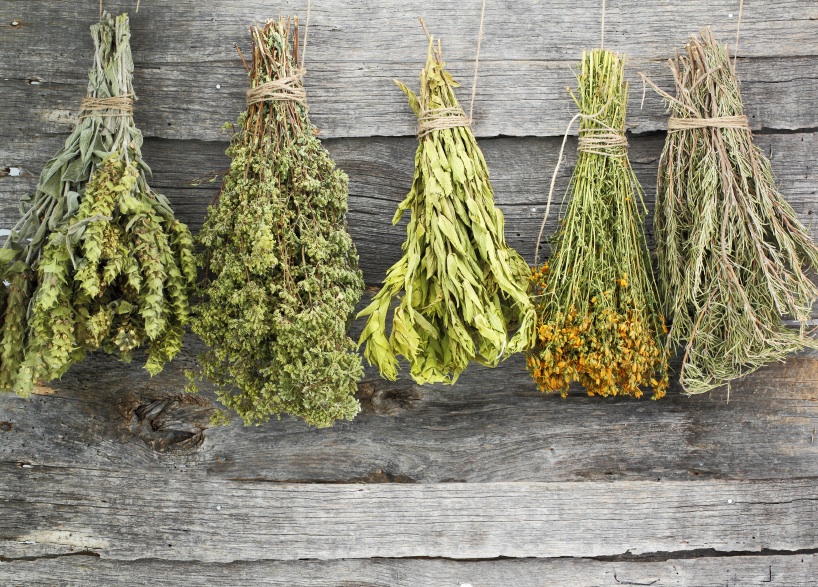Cooking with Spices and Herbs

Herbs and spices can make all the difference in cooking and will take your favorite dishes from dull to delectable. For instance, can you imagine turkey stuffing without sage or chili without chili powder? If you are a novice cook or even an experienced but unadventurous cook, exploring the world of seasonings will add a whole new dimension to your cooking. Don’t be intimidated by the sheer variety of spices available. There are many tried and true spice and food combinations where you can’t go wrong. (see below)
What exactly are spices vs. herbs?
Spices are the aromatic seasonings that come from the roots, bark, buds, fruit, or seeds of plants. Herbs are the leafy parts of plants such as basil.
When do you add spices?
Many spices may be added at the beginning of cooking since heat and moisture is needed to fully release their flavors. Fresh herbs are usually best when added near the end of cooking or after the dish is removed from heat or they will lose their potency. Parsley, for example, is often sprinkled over food as a garnish.
Buy spices in bulk
Buying spices in bulk rather than in jars makes sense because you buy only what you need and you won’t have any waste from unused prepackaged spices in jars that linger on your spice rack. And bulk spices are often fresher than jarred spices.
Storing spices and herbs
Spices should be kept in a cool, dark spot in tightly covered containers or sealed bags. Heat and light will diminish spices quickly. It is generally recommended to keep spices up to six months for best flavor. Avoid storing near a dishwasher, sink. or heating vent. Remove from container with a dry spoon or sprinkle into the palm of your hand before adding to food. Avoid sprinkling directly from the container into a steaming pot to prevent steam moisture from entering the container.

Other tips for using spices and herbs
- Dry vs. fresh herbs: 1 tablespoon fresh herbs = approximately 1 teaspoon dried
- Lightly toasting spices in a dry skillet for a couple minutes wakes up the essential oils and intensifies the flavors
- Remove bay leaves at the end of cooking
Not sure what spices and herbs to buy? Here is a basic list of seasonings that many cooks keep in their pantry:
Basic Spice and Herb List
Oregano – Good in Italian dishes
Basil – Goes well in combination with oregano, any kind of tomato dish
Dill Weed – Great for fish, white sauces, ranch dressing
Thyme – Good with meat, poultry, stews
Paprika – Sweet Hungarian or smoked is best, use in goulash, rice dishes, sprinkle over deviled eggs
Cumin – Use in Mexican dishes
Cinnamon – For baking and Indian curries
Nutmeg – Use for baking, quiche, and cream sauces. Excellent when grated fresh.
Rosemary – A poultry basic, also good in winter stews and soups
Sage – Use in classic bread stuffing, to season breakfast sausage, and with poultry
Whole Bay Leaf – Toss into soups and stews
Tarragon – Good with seafood, poultry, and cream sauces
Chili Powder – Usually a blend of different spices, but you can get pure chili powder (such as ancho), use to make a pot of chili, in meat rubs
Cayenne – Spicy hot, use to add heat to any dish. A little goes a long way.
Ginger – Mildy spicy, use in Asian and Indian cuisine
Curry Powder – A blend of various spices, use in Indian cooking
Whole Peppercorns – Superior to preground. A must for grinding your own with a pepper grinder